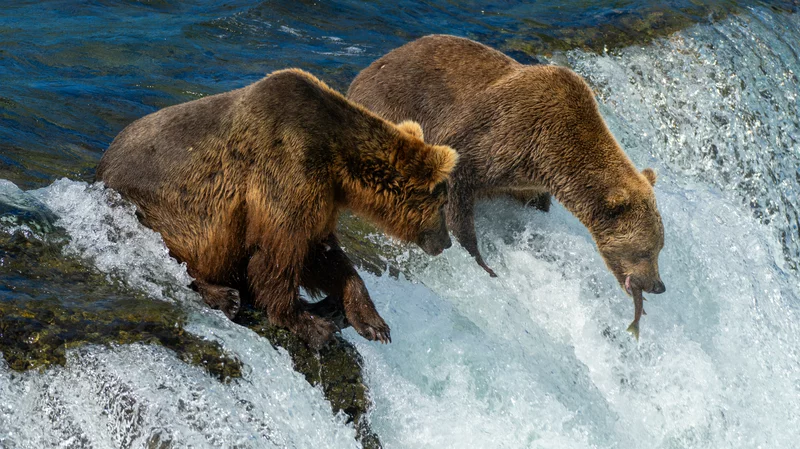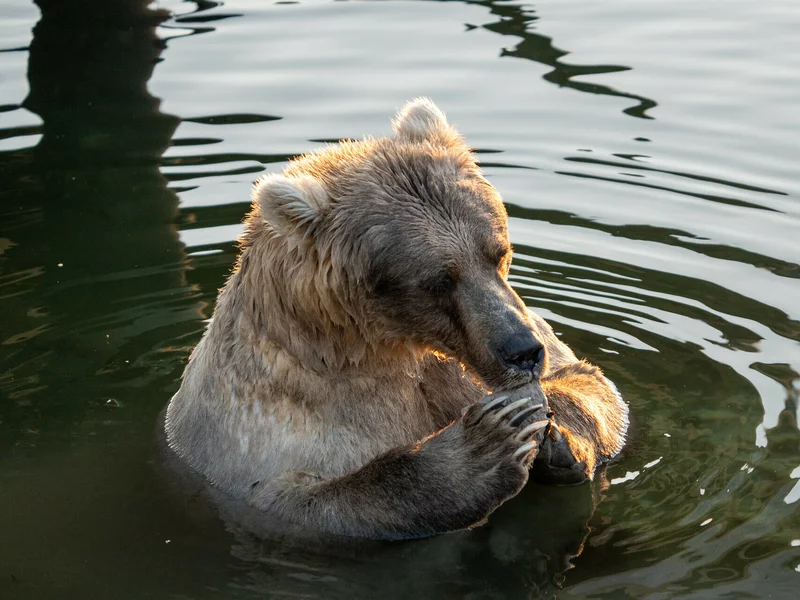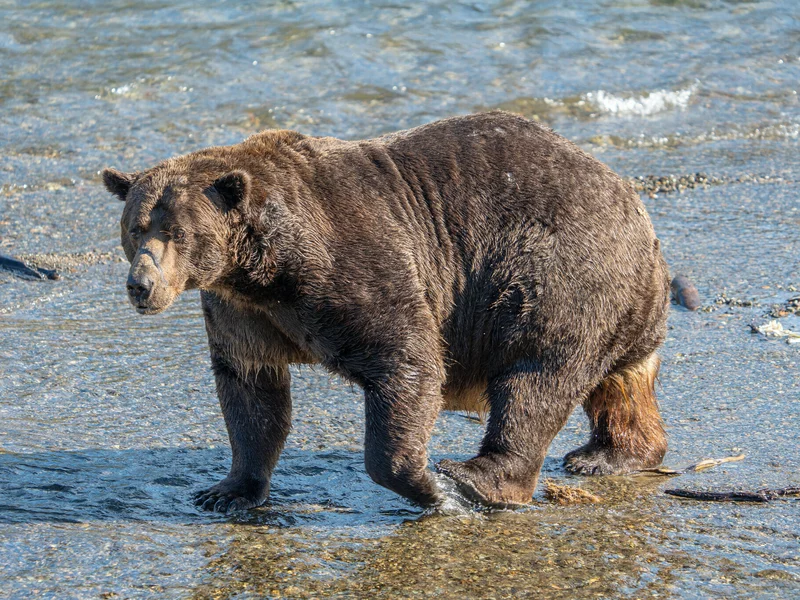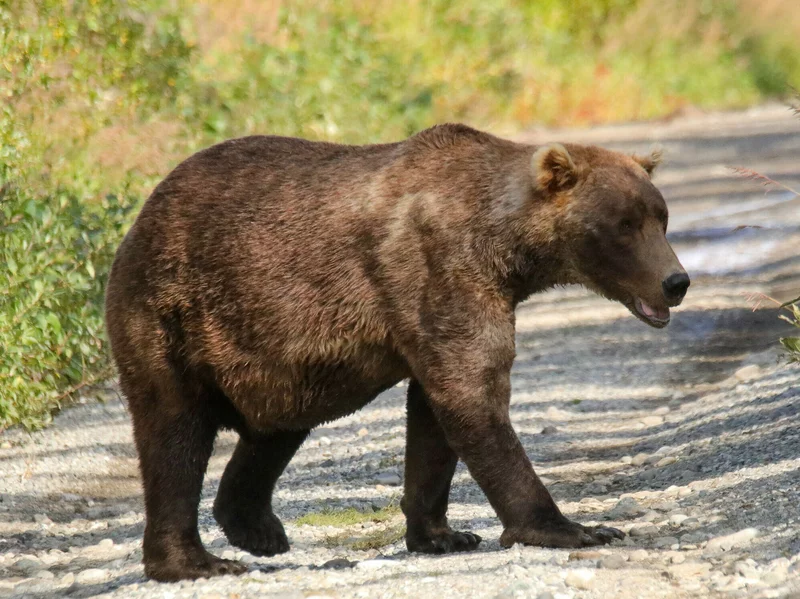
It’s one of the Short Wave team’s favorite times of the year: Fat Bear Week! The week celebrates the annual quest of bears in Katmai National Park and Preserve to pack on as many pounds as possible before hitting the hibernation sack. Throughout the week, ranger-selected brown bears are entered into an online, bracket-style tournament to see which will be proclaimed champion.
Fat Bear Week is the brain child of former park ranger Mike Fitz. With the help of other rangers, he held the first competition in 2014 as a one-day event: Fat Bear Tuesday. The event was so popular on social media that Fitz turned it into a whole week the following year.
Why fat is essential for bears
Adult male bears average 700 – 900 pounds in mid-summer. By late summer and fall, that figure can go up to around 1,200 pounds for the biggest males.
Those extra pounds will help them survive the winter.
During hibernation, bears’ bodies slow way down. They don’t eat, drink — or generally even urinate or defecate during this period.
Instead, their fat is metabolized to produce water and food, and their waste is recycled. Their kidneys shut down almost completely. A build-up of urea, a component of urine that would normally be toxic is recycled into proteins that help maintain the bears’ muscle mass. All of this helps bears hold onto their muscle mass and bone density until they finally emerge from hibernation in the spring.
Still, these bears can lose one-third of their body weight over the course of hibernation. So they really need all the food they can get before they hibernate!
Who we’re watching
Today, there’s a spate of bear content surrounding the competition – from the warm up event Fat Bear Junior to bear commentary from park rangers and brown bear live cams. Plus, anyone can vote in this year’s bracket! The final round will take place on October 10, also known as Fat Bear Tuesday.
Below are a few spotlights of contenders.

435 Holly is a large adult female bear that the National Park Service website compares to a “lightly toasted marshmallow” in both color and shape. The site also notes that around this time of year, in early autumn, 436 Holly is “usually very fat with grizzled blond fur.”
Holly is also on our radar because she is a true Mama Bear. She’s raised multiple cubs — some biological, some adopted — while putting on those precious pounds. If she won this year, it would be her second victory. She was the Fat Bear Week champion in 2019.

32 Chunk is a large male bear. The National Park Service says his defining features are his “narrowly-set eyes, a prominent brow ridge and a distinctive scar across his muzzle.” He’s a top contender because, according to the National Park Service, “Even at his leanest, Chunk carries substantial fat reserves, especially on his hindquarters.”
Throughout the years, Chunk has risen through the bear ranks and now enjoys some pretty prestigious fishing spots. In 2020, he lost Fat Bear Tuesday to bear 747, who is the defending 2022 champion. Will Chunk’s “low hanging belly and ample hindquarters” be enough to gain him a win this year?

Meet the winningest bear of Fat Bear week, 480 Otis. He has claimed the title four times, possibly because he is one patient boi. Instead of chasing salmon, he waits until they come to him.
The National Park Service describes him as “a medium-large” adult male, with a “blocky muzzle and floppy right ear” as some of his defining characteristics.
Read a science headline you want to know more about? Email us at shortwave@npr.org.
Listen to Short Wave on Spotify, Apple Podcasts and Google Podcasts.
This episode was produced by Berly McCoy and Gus Contreras. It was edited by Rebecca Ramirez, Christopher Intagliata and Viet Le. The fact checker was Anil Oza, and the audio engineer was Robert Rodriguez.




